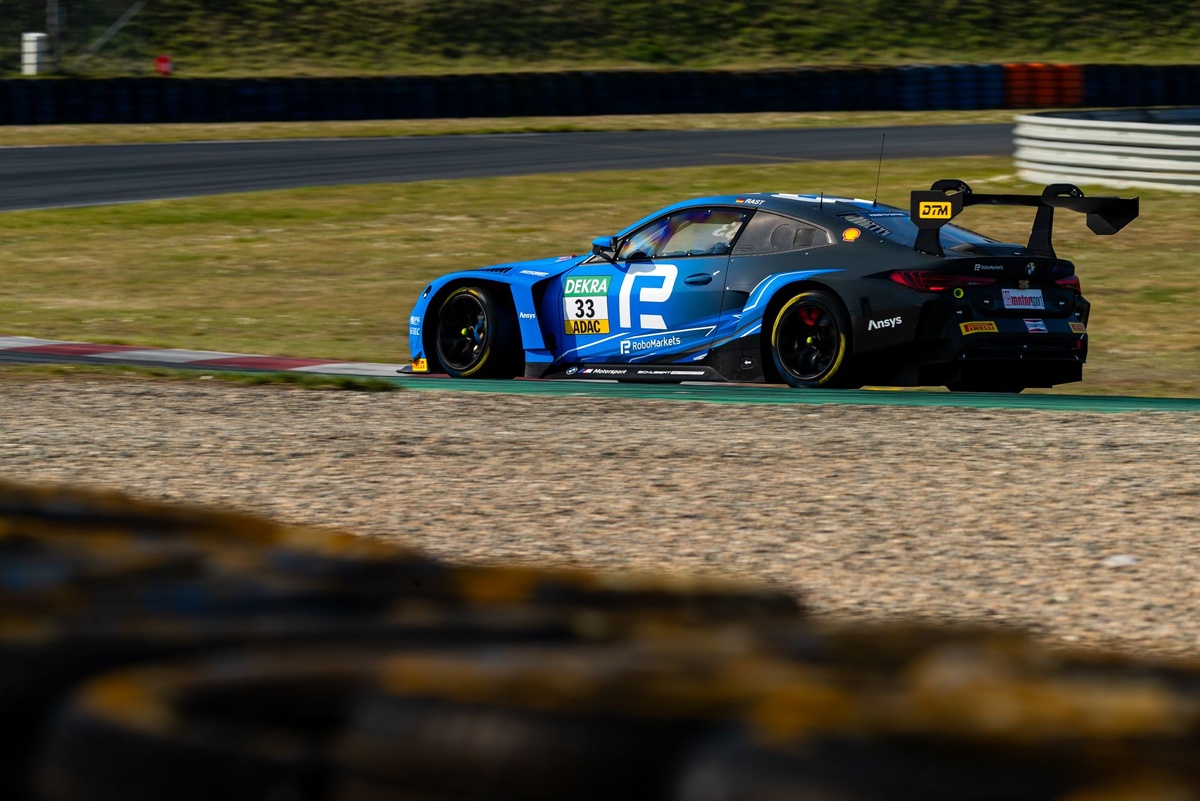
Last year, SRO Head of Engineering Claude Surmont, who is responsible for the Balance of Performance (BoP) in the DTM, showed that he is not afraid to get a grip on cars like the Porsche 911 GT3 R via the ride height in 2024. This left the Manthey team's heads spinning and made for a tough season after the DTM title in 2023.
A similar scenario is looming for the BMW M4 GT3 ahead of the opener in Oschersleben. As the first DTM BoP of the year shows, the new Evo model has to make do with a significantly less favourable ground clearance at the front and rear axle compared to its predecessor, while the values for the other cars remain the same.
“Similar to the Porsche, we have been prescribed vehicle heights this year that I don't think correspond to what we normally drive,” said Rene Rast. “Apparently we have to completely rethink our set-up.”
Specifically, the minimum ground clearance on the front axle of the M4 GT3 Evo has been increased from 82.5 to 84 millimetres compared to the M4 GT3. At the rear axle, the car is raised from 81.5 to 89 millimetres. This could have a negative effect on the aerobalance; the ratio of the downforce on the front axle to the total downforce.
It is possible that the BoP organisers want to reduce the improved downforce from the Evo package. Last year, the Porsche had to drive five millimetres higher on the front axle, which Manthey had to battle with in the corners. In addition, this DTM season is the first time that the minimum angle of the rear wing has been specified by the BoP. For the BMW rear wing, this is four degrees.
“The opposite of what we have always done up to now,” says Rast. “That means we apparently have to completely rethink our set-up and start from scratch again. Now we're in Oschersleben for the race and only have two half an hour practice sessions.”
Is Schubert facing a Manthey fate?

One person who knows this situation is former champion Thomas Preining: "Last year, it was a very last-minute change before the first race. I think we let that take us by surprise. Then we improved over the course of the season. In the end, it was like with a new car, you learn more and more.”
The Porsche 911 GT3 R has been given a 1.5 millimetre larger restrictor compared to the test, which it dominated, meaning that it now has a diameter of 39.5 millimetres, but also 10 kilograms more ballast. The restrictor is therefore back in line with the second half of the 2024 season, while the 101 millimetre ride height at the front axle, which the SRO introduced in the DTM last year, remains in place.
As in the test, the Lamborghini will have to make do with a one millimetre smaller restrictor compared to last year in the DTM. The weight of the 2024 championship-winning car has been increased by five kilograms compared to the test.
The new Ford Mustang GT3 in the DTM, which was not among the front runners in the test and struggled with its long wheelbase like the BMW at Oschersleben, has to cope with 15 kilograms of additional weight. The Ferrari and the Aston Martin are given slightly more boost pressure, but the Vantage's lambda value is increased, which in turn has a negative effect on performance.
New parameters that affect the balance of power
The Mercedes-AMG, Audi and McLaren cars have not been touched in comparison to the test. What the balance of power will look like in Oschersleben is still a big mystery. Due to a grey area clarification, the manufacturers had to commit to one product in certain areas, such as the springs, which could have an influence.
In addition, the new Pirelli slick tyres and the new synthetic fuel could help one vehicle and have a negative effect on the other. As far as the Coryton fuel is concerned, which replaces the Shell fuel from previous years, test bench tests were carried out in advance, which were incorporated into the BoP.
The now prescribed minimum rear wing angle could also have an influence. This provides the SRO Motorsports Group with another element that can be used to prevent excessive top speeds.







